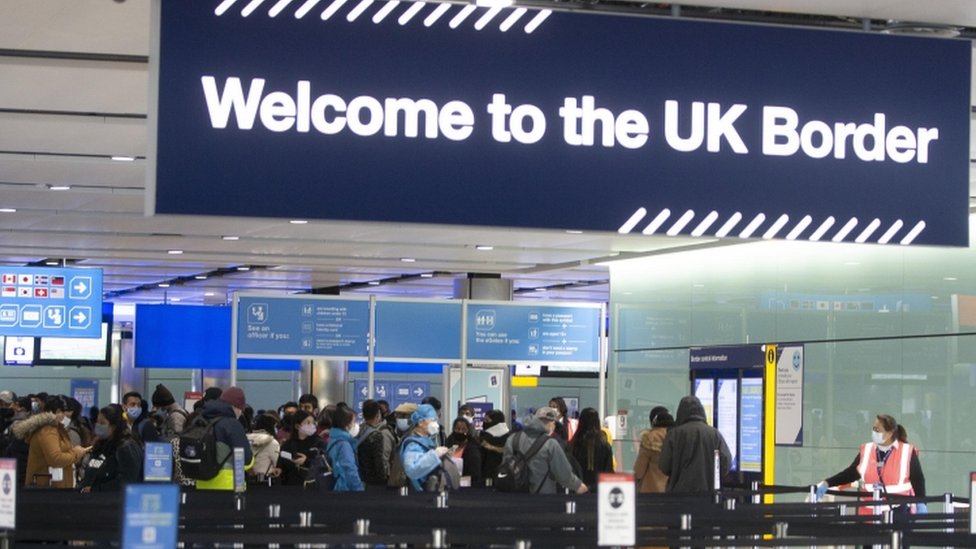Aircraft Pilots and Air Traffic Controllers, classified under SOC Code 3511, are essential professionals in the aviation industry who ensure the safe and efficient operation of aircraft. Their roles encompass a wide range of responsibilities, making them critical to both commercial and private aviation sectors.
- Key Responsibilities:
- Study flight plans and make necessary adjustments.
- Direct or undertake checks on engines, instruments, control panels, and cargo distribution.
- Monitor fuel supplies, aircraft stability, response to controls, and overall performance.
- Operate controls to fly airplanes and helicopters in compliance with air traffic control and operational procedures.
- Monitor fuel consumption, air pressure, and engine performance during flights, advising pilots on navigation and performance.
- Maintain radio contact and discuss weather conditions with air traffic controllers.
- Direct the movement of aircraft, maintaining radio/radar or visual contact en route to destinations, especially in controlled airspace.
- Provide landing instructions to pilots and monitor descent.
- Plan flight routes, calculate fuel consumption and optimum flying heights, and gather information on weather and cargo conditions.
- Handle emergencies, unscheduled traffic, and other unexpected incidents.
- Accompany pupils on training flights, demonstrating flying techniques.
With the ongoing growth in global air travel and the increasing complexity of airspace management, the demand for skilled aircraft pilots and air traffic controllers is on the rise. Aviation organizations and training institutions worldwide are actively seeking qualified individuals for these roles. This guide will assist HR professionals in understanding the requirements and procedures involved in hiring and sponsoring aircraft pilots and air traffic controllers within the UK's immigration framework.
What is SOC Code 3411 for Aircraft pilots and air traffic controllers?
SOC Code 3511 refers to aircraft pilots and air traffic controllers who ensure the safe and efficient operation of aircraft. Their responsibilities can include:
- Studying flight plans: Analyzing and adjusting flight plans as necessary to ensure optimal safety and efficiency.
- Conducting checks: Performing inspections on engines, instruments, control panels, fuel supplies, and aircraft's stability to ensure overall performance.
- Operating controls: Directing or undertaking the operation of aircraft controls to fly airplanes and helicopters, while adhering to air traffic control guidelines and operating procedures.
- Monitoring indicators: Keeping track of fuel consumption, air pressure, engine performance, and other indicators during flight, and advising the pilot on factors that may affect navigation or performance.
- Maintaining communication: Keeping in contact with air traffic controllers to discuss weather conditions and other crucial operational factors.
- Directing aircraft movement: Guiding the movement of aircraft while maintaining radio, radar, or visual contact throughout their flight path, including during transitions in and out of controlled airspace and holding areas.
- Providing landing instructions: Giving precise landing instructions to pilots and closely monitoring their descent.
- Flight planning: Planning flight routes, calculating fuel needs, determining optimum altitudes, and gathering information on weather and cargo distribution.
- Handling emergencies: Effectively managing emergencies, unscheduled traffic, and other unexpected incidents during flight operations.
- Training new pilots: Accompanying student pilots on training flights and demonstrating essential flying techniques.
Aircraft pilots and air traffic controllers are essential to the aviation industry, ensuring the safety of passengers and crews while maintaining the integrity of air travel.
Eligibility to Hire Aircraft pilots and air traffic controllers (SOC Code 3411)
1. Job Requirements
Aircraft pilots and air traffic controllers must demonstrate extensive knowledge and skills in aviation operations and meet specific qualifications or experience criteria. These may include:
- Certifications: Valid pilot's license or air traffic control certification as per regulatory authority requirements.
- Flight Experience: Accumulated flight hours, preferably with experience in a variety of aircraft types or air traffic control environments.
- Technical Skills: Proficiency in using flight instruments, navigation systems, and aircraft controls, as well as air traffic management systems.
- Degree: A degree in aviation, aeronautical science, or a related field is highly advantageous but not mandatory.
- Communication Skills: Excellent verbal and written communication skills for effective coordination with other aviation professionals and adherence to safety protocols.
- Problem-Solving Ability: Strong analytical skills to manage emergencies, unscheduled traffic, and other unpredictable situations.
- Knowledge of Regulations: Comprehensive understanding of aviation regulations, safety guidelines, and air traffic control procedures.
Ensure the job description aligns with SOC Code 3511 and that the applicant’s experience and qualifications meet the expectations for the role.
- Salary Thresholds
- Use the Minimum Salary Calculator to ensure your salary offer meets immigration requirements.
Sponsoring Aircraft pilots and air traffic controllers: A Step-by-Step Guide for HR Professionals
Once you’ve confirmed that the role and candidate meet the eligibility requirements, follow this step-by-step guide to sponsoring Aircraft pilots and air traffic controllers under SOC Code 3511.
Step 1: Obtain a Sponsor Licence
Before hiring non-UK Aircraft pilots and air traffic controllers, your company or institution must obtain a sponsor licence. This licence enables you to legally sponsor overseas Aircraft pilots and air traffic controllers under the Skilled Worker Visa program.
- Sponsor Licence Application: Submit documentation proving that your business is legitimate and has a genuine vacancy. Visit the sponsor licence application guide for more information.
- Sponsor Licence Fees: Small businesses typically pay £574, while larger institutions pay £1,579. For more information, visit the sponsor licence fees guide.
- Processing Time: Applications typically take up to 8 weeks, but using the Sponsor Licence Priority Service can reduce the processing time to 10 working days.
Once your sponsor licence is approved, you will receive a sponsor licence number, which allows you to assign Certificates of Sponsorship (CoS).
Step 2: Assign a Certificate of Sponsorship (CoS)
Once you have your sponsor licence, the next step is to assign a CoS to the Aircraft pilots and air traffic controllers. This document provides key details about the job and the individual being sponsored.
- Defined vs Undefined CoS: Use a Defined CoS for Aircraft pilots and air traffic controllers applying from outside the UK, and an Undefined CoS for those already in the UK. Learn more in the Defined & Undefined Certificates of Sponsorshipguide.
- Required Documents: Provide details such as the Aircraft pilots and air traffic controllers’s portfolio, passport and job offer. Refer to Documents Required for Certificate of Sponsorship for a full list of necessary documents.
Step 3: Apply for the Skilled Worker Visa
Once the CoS is issued, the Aircraft pilots and air traffic controllers can apply for the Skilled Worker Visa.
- Visa Fees: Fees vary depending on the role and visa length—use the visa fees calculator to estimate the costs.
- Immigration Skills Charge: Employers are required to pay this charge as part of sponsoring non-UK workers. This is separate from visa fees.
Conducting a Right to Work Check for Aircraft pilots and air traffic controllers
Before the Aircraft pilots and air traffic controllers begins working, you must conduct a right to work check to ensure they are legally allowed to work in the UK.
- Manual Right to Work Check: Verify original documents such as the Aircraft pilots and air traffic controllers’s passport and visa.
- Online Right to Work Check: If the Aircraft pilots and air traffic controllers holds an eVisa, you can use the UK government’s online system to verify their right-to-work status.
For more details on how to perform these checks, see the right to work check guide.
Post-Hiring Responsibilities and Compliance
- Record-Keeping and Reporting
- Record-Keeping: Maintain accurate and up-to-date records of the Aircraft pilots and air traffic controllers’s employment details, salary and contact information.
- Reporting Changes: Report any significant changes to the Aircraft pilots and air traffic controllers’s role—such as promotions or salary increases—via the Sponsor Management System (SMS).
- Sponsor Licence Duties and Compliance
- Failure to comply with your sponsor licence duties can result in penalties or sponsor licence revocation, impacting your ability to sponsor future Aircraft pilots and air traffic controllerss.
How Borderless Can Help with Sponsoring Aircraft pilots and air traffic controllers
Sponsoring Aircraft pilots and air traffic controllers under SOC Code 3511 can be a complex process, but Borderless can simplify it for you. We offer comprehensive support to help you manage the entire sponsorship process.
End-to-End Sponsorship Support
At Borderless, we assist with:
- Sponsor Licence Application: Guiding you through the application process and ensuring all required documents are submitted correctly.
- Certificate of Sponsorship Assignment: Streamlining the CoS process to make hiring easier.
- Compliance Management: Helping you stay compliant with immigration laws to avoid penalties.
If you need assistance with hiring or sponsoring Aircraft pilots and air traffic controllers, get in touch for personalised support.
Conclusion
Hiring and sponsoring Aircraft pilots and air traffic controllers under SOC Code 3511 can be a rewarding way to enrich the cultural landscape of your organisation. By following the steps outlined in this guide, you can successfully navigate the sponsorship process while ensuring compliance with UK immigration laws.
For further guidance, Borderless is ready to assist you with all your sponsorship needs. Contact us for expert advice.
Automate Home Office Audits with Borderless
The Borderless platform provides a centralized system for all sponsorships, automating reminders for key tasks and ensuring best practices across your organization, simplifying audit preparation and ongoing compliance.






